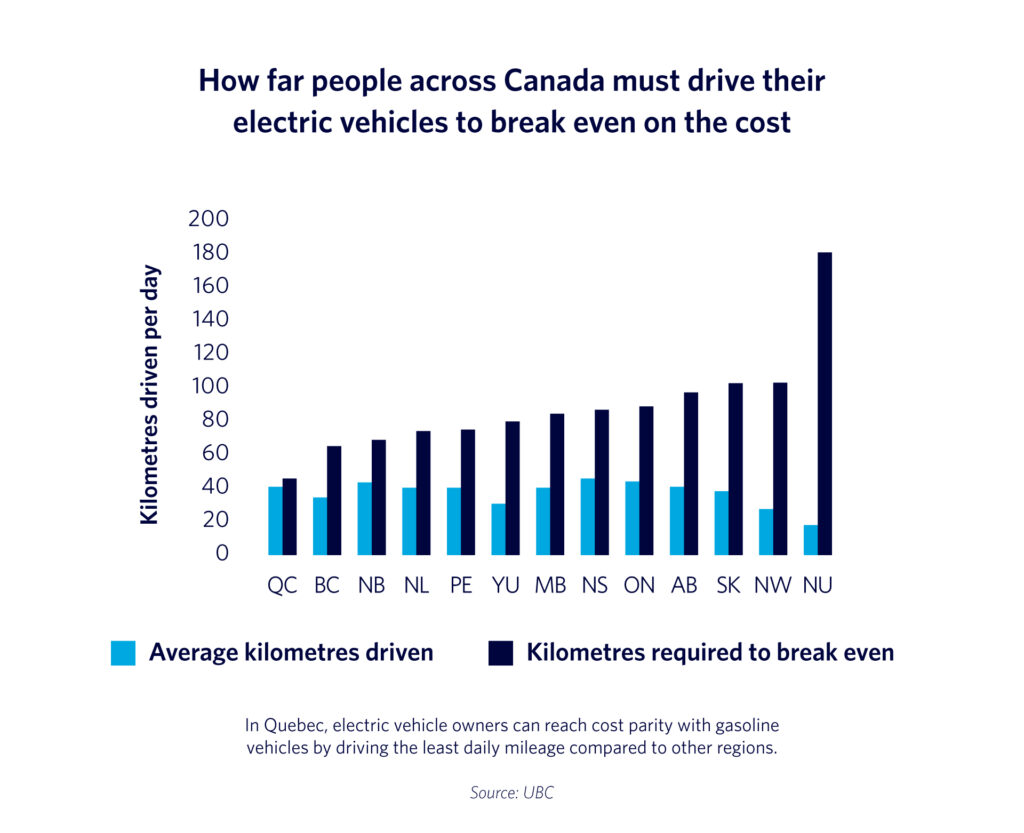Victoria, British Columbia — A new study by the University of British Columbia (UBC) highlights how it is cheaper in some regions to drive an electric vehicle (EV).
In their study, researchers specifically analyzed how far people need to drive their electric vehicles in order to break even on the cost when considering factors such as the impacts of tax rebates and tax rates, charging costs, typical distance households travel in a region and electricity costs—all of which vary from region to region.

The study found that across Canada, Quebec has the biggest advantage in terms of consumer costs, followed closely by New Brunswick, Newfoundland and Labrador, Nova Scotia, British Columbia, and Prince Edward Island. Comparatively, Saskatchewan, the Northwest Territories and Nunavut are at the biggest disadvantage.
Bassam Javed, the study’s author and a PhD candidate at the Institute for Resources, Environment and Sustainability (IRES) at UBC noted that “in Quebec, an electric car owner must travel at least 46 kilometers per day to come out ahead in comparison with owning a traditional car. In Nunavut, this number rises to 180 kilometers.”
Javed further notes that the results of the study suggest that if a consumer is looking to make the switch to electric, choosing a smaller, more basic EV can lead to more savings than a luxury electric vehicle.
Dr. Amanda Giang, a professor in the department of mechanical engineering at IRES further noted that as the cost of switching to EVs will be higher in some places and for some households, targeted interventions will be needed to address the affordability gap.
“Canada needs to take many paths towards clean and affordable transportation for all, which means not only supporting transitions to EVs, but also public transportation and active transport.”
The post The Cost of Going Green: New study shows EVs most economical in Quebec appeared first on Collision Repair Magazine.







